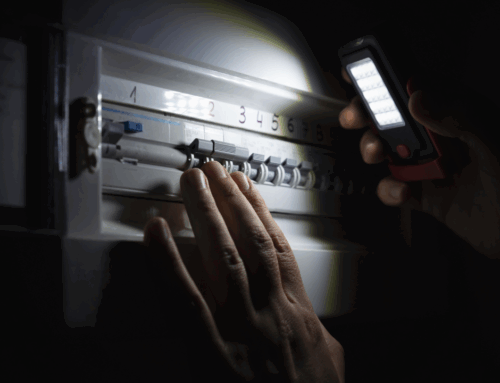Portable Appliance Testing (PAT Testing) is a crucial part of ensuring workplace safety, particularly when it comes to electrical equipment. For employers, understanding the legal requirements surrounding PAT testing is essential for maintaining a safe and compliant environment. This article will break down what PAT testing involves, the legal requirements for employers, and how it can help safeguard both employees and the business.
What is PAT Testing?
PAT Testing involves inspecting and testing electrical appliances and equipment to ensure they are safe to use. The process checks whether portable appliances are free from electrical faults that could cause harm, such as electric shocks or fires. Typically, PAT testing includes both a visual inspection and more detailed tests using a PAT testing device. The results of these tests will determine whether the appliance meets safety standards or needs repair or replacement.
Why is PAT Testing Important?
The importance of PAT testing cannot be overstated. Electrical appliances are found in virtually every workplace, and faulty equipment can lead to dangerous situations. PAT testing helps reduce the risk of electrical accidents, enhances workplace safety, and ensures compliance with the legal regulations surrounding electrical equipment.
Legal Requirements for PAT Testing
While PAT testing is not explicitly required by law in the UK, there are legal obligations regarding electrical safety that employers must adhere to, which makes PAT testing a necessary practice. These obligations fall under several key pieces of legislation:
-
Health and Safety at Work Act 1974
The Health and Safety at Work Act places a duty on employers to ensure the health and safety of employees while they are at work. This includes maintaining the safety of electrical equipment in the workplace. Although the law does not specifically mandate PAT testing, employers must ensure that all electrical appliances are properly maintained and free from risks that could harm employees. -
The Electricity at Work Regulations 1989
Under the Electricity at Work Regulations, employers are legally required to ensure that electrical systems are maintained in a safe condition. The regulations state that electrical equipment must be properly maintained to prevent danger, which includes carrying out regular checks and inspections. PAT testing serves as an effective way to comply with these regulations, as it verifies that appliances are safe to use and highlights potential hazards. -
The Management of Health and Safety at Work Regulations 1999
These regulations require employers to carry out risk assessments and implement safety measures accordingly. PAT testing should be part of a broader electrical safety risk assessment. If you determine that electrical appliances present a risk to the health and safety of employees, PAT testing can help identify faulty equipment before it becomes dangerous. -
Provision and Use of Work Equipment Regulations 1998 (PUWER)
PUWER requires employers to ensure that all work equipment, including electrical appliances, is safe to use. The regulation does not specify how this should be done, but PAT testing is a widely recognised method to comply with these requirements.
Frequency of PAT Testing
The frequency of PAT testing depends on several factors, including the type of equipment, its use, and the environment in which it is used. Some equipment, such as computers or office appliances, may only need to be tested every 2 to 4 years. However, high-risk equipment, such as machinery in construction or industrial settings, may need to be tested more frequently.
The Health and Safety Executive (HSE) does not prescribe specific testing intervals, instead advising employers to conduct a risk assessment to determine appropriate testing intervals. In general, the more frequently an appliance is used and the harsher the environment, the more regularly it should be tested.
Record-Keeping and Compliance
Employers are required to keep records of all PAT tests carried out in the workplace. These records must include the date of the test, the results, and any actions taken (such as repairs or replacements). Proper documentation not only helps ensure compliance with the law but also provides proof that due diligence has been exercised in maintaining a safe working environment.
These records will also be crucial in the event of an accident or inspection. Should an incident occur involving faulty equipment, you’ll be able to demonstrate that you took the necessary precautions to ensure the safety of your employees.
The Consequences of Not Complying with PAT Testing
Failure to conduct regular PAT testing and maintain electrical safety can have serious consequences for employers. Aside from the obvious safety risks to employees, businesses can face legal action in the event of an accident. If a health and safety investigation finds that electrical appliances were not properly maintained, the employer may face fines or penalties. In severe cases, employers could be held liable for accidents or injuries caused by faulty electrical equipment.
Conclusion
While PAT testing itself may not be a legal requirement in the UK, it plays a critical role in ensuring that businesses comply with health and safety regulations. Employers have a legal duty to ensure the safety of their employees, and PAT testing is an effective way to meet this obligation. By regularly testing electrical appliances, keeping accurate records, and adhering to the relevant safety legislation, businesses can create a safer working environment and avoid the potential risks of electrical accidents.
If you haven’t already, it is highly advisable to schedule regular PAT testing and conduct risk assessments to ensure full compliance with your legal responsibilities. Regular maintenance of electrical equipment not only keeps your workplace safe but also protects your business from potential legal repercussions.







Leave A Comment